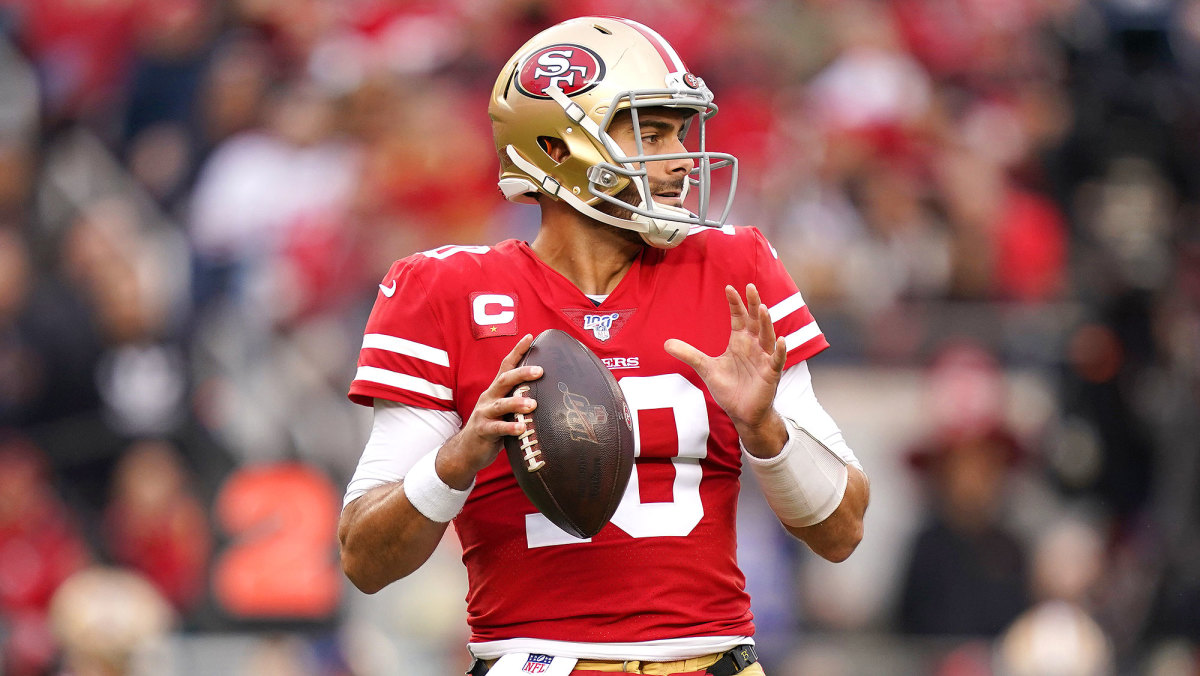How the 49ers Reached Super Bowl LIV

You can’t look at an NFL season in a vacuum. There are defining moments in a franchise that may happen years before the club’s eventual berth into the Super Bowl, which is what we’re trying to focus on here. Yes, the San Francisco 49ers were special in 2019, overcoming a talented division, a quarterback recovering from serious injury last season and a few nagging injuries at key positions. But in the end, they’re one of two teams left standing.
Here’s how they got here:
Aligning the head coach and GM
In early February 2017, the San Francisco 49ers admitted they had a problem. After the Jim Harbaugh era crashed, the club tore through one-year head coaches Jim Tomsula and Chip Kelly before landing on their ideal, long-term fix.
Hiring both a head coach, Kyle Shanahan, and a general manager, John Lynch, at the same time was a plea for stability, and signing them to longer-than-normal contracts was an admission of serious organizational discord. It’s also a move many organizations have copied in the following years.
Around the league, a largely draconian setup exists where personnel people draft who they believe are the most talented players, and coaches have to adjust what they do schematically to fit them in place. But a harmonious relationship between GM and coach—like the one in San Francisco—can break down those barriers, leading to the type of organization that pipelines talent directly into the scheme. That was obvious over the 49ers’ past two seasons with an influx of talent like Deebo Samuel and George Kittle, as well as free-agent acquisitions like Weston Richburg, Tevin Coleman and Matt Breida.

Trading for and signing Jimmy Garoppolo
On Oct. 31, 2017, the 49ers traded for long-time Tom Brady backup Jimmy Garoppolo. While plucking quarterbacks (and coaches) from the Patriots’ system has often been a fruitless venture, the acquisition of Garoppolo was significant. He was believed to be the heir apparent to Tom Brady, whenever that moment was to come. He was good enough to pilot an NFL offense.
That became clear to 49ers fans immediately when Garoppolo won his first five starts that year, igniting an offseason of high expectations for the franchise. He tore his ACL in early 2018, but that did not stop the optimistic rebuilding style of the 49ers at that moment. Interestingly enough, they treated Garoppolo’s lost-to-injury season as a continued effort to build the team they eventually thought they’d have. Without the pressure of an ownership group breathing down their necks and demanding instant results, the 49ers were allowed to plan for a future in which Garoppolo was healthy and able to pilot this versatile offense.
Signing Richard Sherman
Nearly every championship team that is built from scratch like the 49ers are takes a swing at a high-profile veteran free agent. The idea, typically, is that this person can help define the culture of the moment or push a middling team in the right direction.
Sherman is unafraid to speak his mind, and his career carries a lot of cachet. It was a move with some degree of risk, as players who have tasted success elsewhere and carved out a name for themselves can become disillusioned with a lack of success in a new place.
Instead, Sherman has helped become the spokesman of another historically great defense and, all the while, he has returned to a rightful place atop his positional rankings. Few are paying better at cornerback right now, which is significant heading into a Super Bowl featuring the likes of Sammy Watkins and Tyreek Hill.
Drafting Nick Bosa
One of the not-so-hidden benefits of Garoppolo’s injury? It vaulted the team to the top of the draft order during a year when the 49ers’ coaching staff and executive team were given a pass from ownership. They were already a roster that was shaping up to be one of the top 10 in the NFL, making their No. 2 spot in the 2019 draft akin to giving the Patriots a top-five pick in a post–Super Bowl year.
Bosa was arguably the best prospect available in 2019, a demonic pass rusher who, much like his brother Joey, could alter the course of a defensive line on his own. Imagine, then, pairing Bosa with four other first-round picks at the position—Arik Armstead, DeForest Buckner, Soloman Thomas and Dee Ford—to unleash a hellish post-snap sprint toward the quarterback while sitting the secondary in a comfortable but advantageously tweaked Cover 3.
San Francisco’s ability to alter the course of football games by both shutting down the run and rushing the passer has been significant. As it turns out, one generational talent at the position is helpful at opening the flood gates.
Beating the Seattle Seahawks for the NFC West
Anecdotally, it seems that every Super Bowl–caliber team has one late-season victory that prepares them for the rigors of a postseason run into the championship game. The 49ers’ 26-21 victory over the Seahawks in Seattle on Dec. 29 had all the trappings of a loser-go-home contest, which was evident in the game-planning and effort level throughout.
While the Seahawks eventually fizzled out this season, one could argue they were better than one (or both) of the teams the 49ers beat on the way here (yes, the Packers beat the Seahawks at home, though is a road, winter playoff game a fair determining factor?). It helped Shanahan adjust and refine his game plan heading into the playoffs.
Question or comment? Email us at talkback@themmqb.com.
